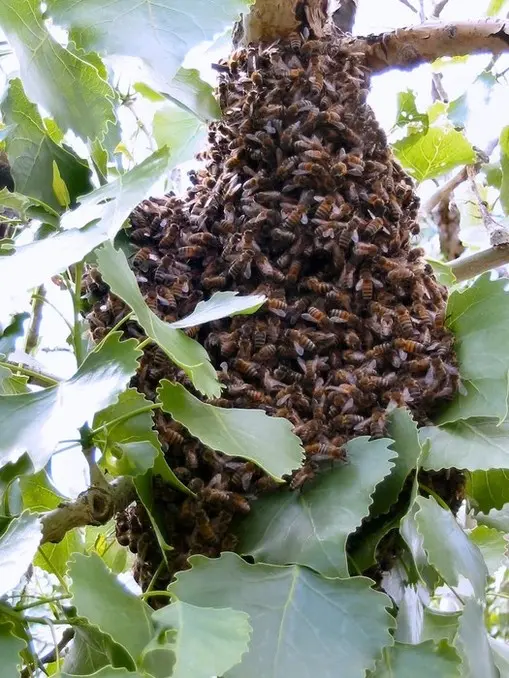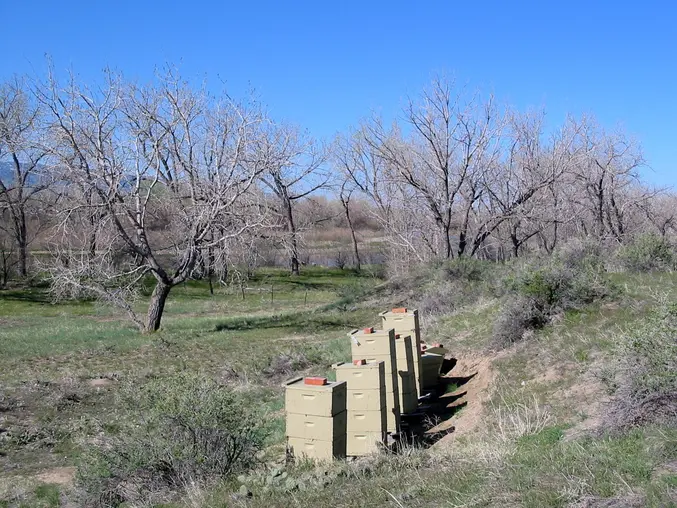Unraveling the Buzz on Checker Boarding

Hey Bee Buddies! 🌸🐝 Let’s chat about a fantastic beekeeping hack – Checker Boarding!
Have you ever wondered how to use the bees’ natural behavior to boost hive populations and honey production? Well, this is the trick!
What’s Checker Boarding, you ask? It’s a simple yet super effective swarm management tool. Picture this: you alternate empty comb frames with feed frames in supers right above the broodnest. This technique has some cool perks:
- Provides extra clustering space when it’s crucial.
- Keeps the brood in direct contact with their food stash.
- Opens up a honey-bound broodnest.
- Doesn’t chill or disturb brood rearing.
- Offers additional empty comb storage for early nectar flows.
- Gets empty and ready for the mid-summer flow.
The best part? It aligns with the bees’ natural behavior and doesn’t stress them out. No confusion or disturbance – just happy bees!
But there’s a catch. Checker Boarding works magic only on vertical hives with removable comb. So, sorry, it’s a no-go for horizontal top-bar hives.
Now, let’s dive into the nitty-gritty of how it works and why it’s so darn effective!
The Walt Wrights Manuscript
Checker Boarding’s brainchild is Walt Wright. He spilled the beekeeping beans in American bee magazines for a decade, focusing on Langstroth beekeeping. Sadly, Walt is no longer with us, and his manuscripts are like hidden treasures. Lucky for you, I’ve got my take on it!
How does it work, you wonder? The bee’s priorities and the beekeeper’s goals often clash. A hive aiming for a reproductive swarm might not give you that sweet honey surplus. But with Checker Boarding, you can manage bees to prevent swarming and score a surplus honey jackpot!
When resources are up for grabs, like capped honey in supers above the broodnest, frames are shuffled like a deck of cards. Honey frame, empty frame, honey frame, you get the drill. This breaks up the solid honey band above the broodnest without causing a buzz in the brood area.
Timing Is Key
Checker Boarding is your springtime go-to, but timing is everything. It’s a pre-game move before the bees get their swarming groove on. Before they even think about swarm preparations – that’s when you swoop in with Checker Boarding magic. Early bird gets the worm, or in this case, the honey!
Results? Brace yourself for the bee bonanza! The swarm impulse is tamed, early-season management is a breeze, hive populations skyrocket, and your broodnest won’t be hogged by early nectar flows.
Checker Boarding follows the natural ebb and flow of the bees, keeping them happy and the beekeeper delighted. It’s like a secret handshake between you and your hive!
But hey, there’s always a flip side. In a chilly climate, a small colony might thrive better without Checker Boarding. You know, different strokes for different bee folks!
My Checker Boarding Journey

I’ve been Checker Boarding my hives that overwinter in three deeps. It’s like a carefully orchestrated dance:
- Brood in the middle box.
- Top box a honey haven.
- Bottom box? Empty frames with pollen and a touch of honey.
To Checker Board:
- Brood box at the bottom.
- Shuffle empty frames from the bottom with the honey-filled frames from the top.
- Voilà! Two Checker-Boarded boxes on top of the brood box.
And the icing on the honey cake? Empty supers on top.
The Biology Behind the Buzz
Understanding bee behavior is like deciphering a secret code. Walt Wright’s original observations and manuscripts are like the Rosetta Stone of beekeeping wisdom.
Broodnest behavior 101: Bees focus on reproductive swarming early on, then shift to survival mode. The hive’s demographic dance involves balancing food and brood for a safe, happy colony. No risks to their survival for these savvy bees!
As resources become abundant, they craftily store honey above the broodnest, shifting from horizontal to vertical storage. It’s like they’re preparing for a bee party in the penthouse!
Timing Tips from Yours Truly
Here’s my Checker Boarding calendar in Wyoming:
- Checker Board before March bids adieu.
- Swarm preparations kick in by the fourth week of May.
- The swarm cut-off date hits during the third week of June.
- Reproductive swarming struts its stuff from the second week of June to the first week of July.
- The storage lull happens from the third week of June to the second week of July.
- The white wax period kicks off during the second week of July.
So, if you’re itching to try Checker Boarding:
- Expect stronger hives, sooner.
- Kiss swarming goodbye, almost.
- Watch honey production soar.
- Enjoy a lighter spring workload.
- Brace yourself for more hustle during harvest.
Curious about what happens when Checker Boarding takes a backseat? Here’s the buzz on that!
-Keep buzzing and bee-ing fabulous, D 🐝🤠
